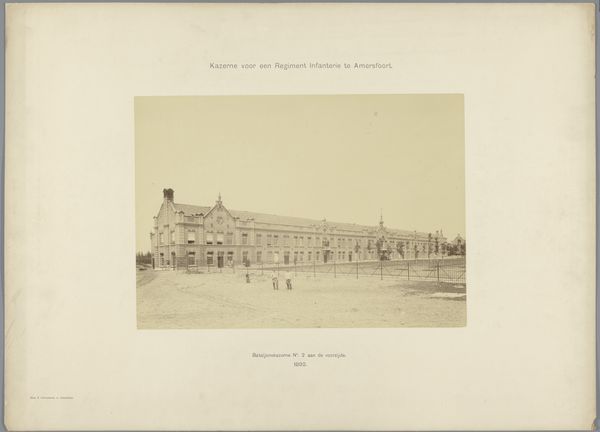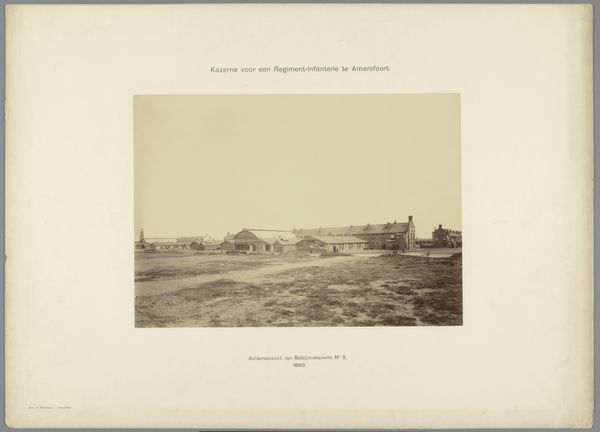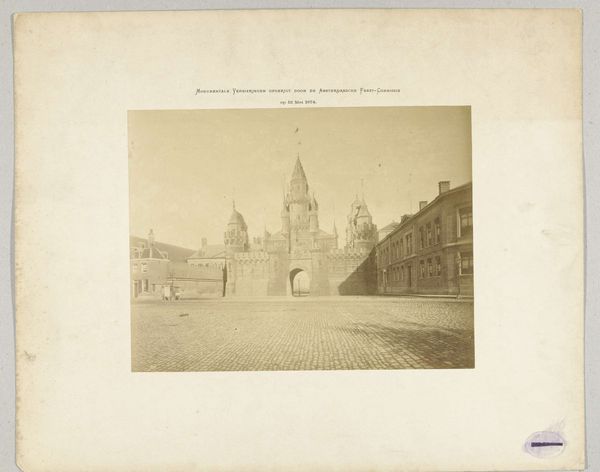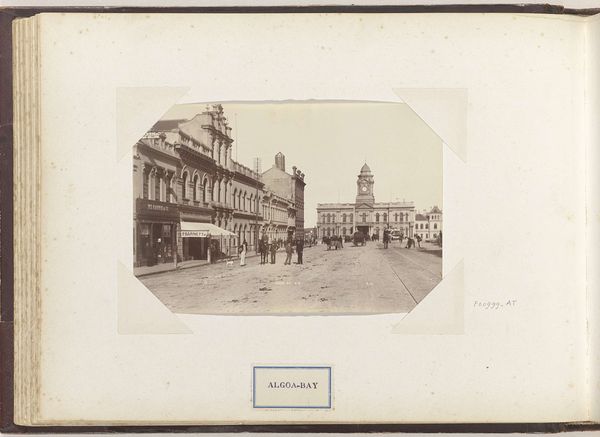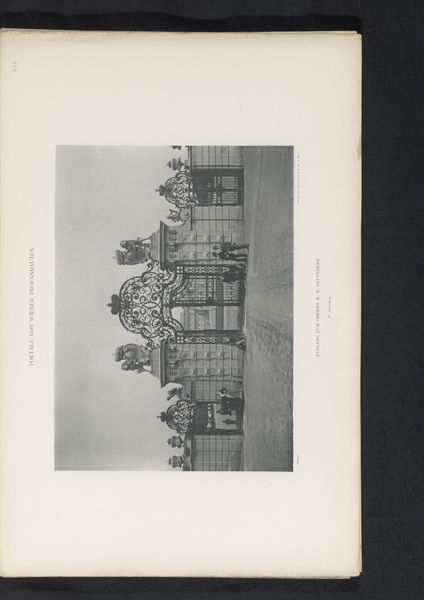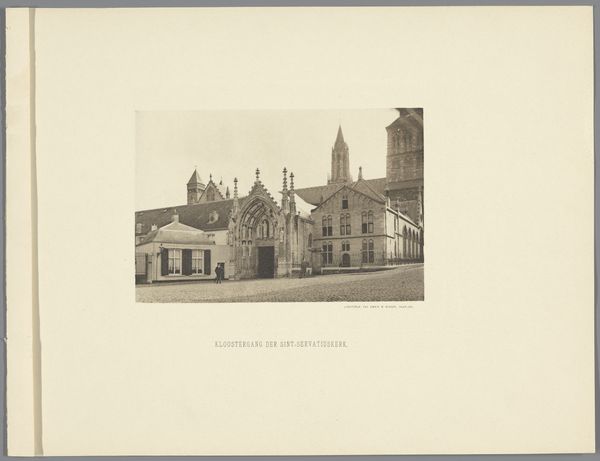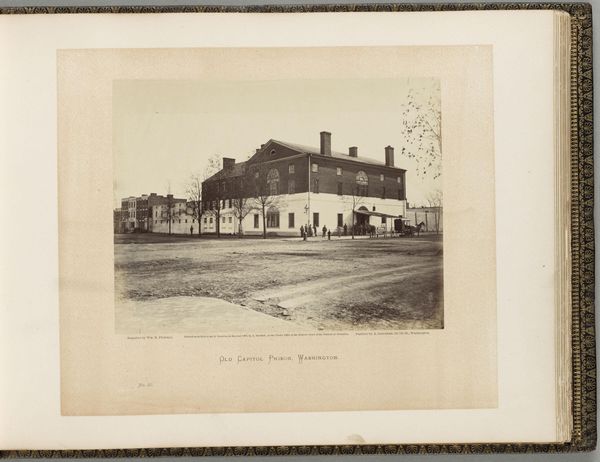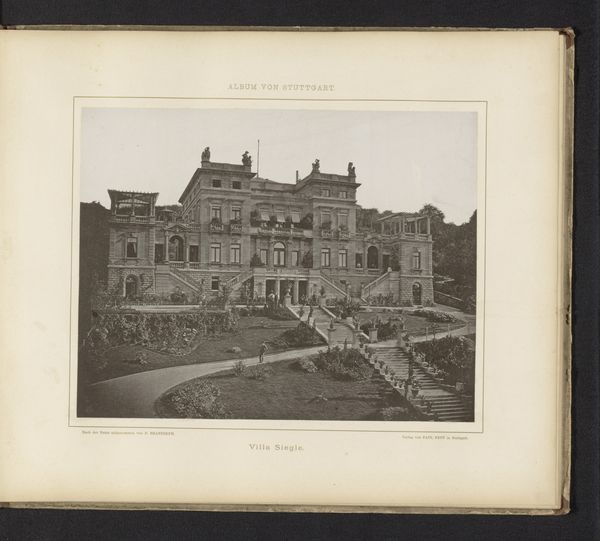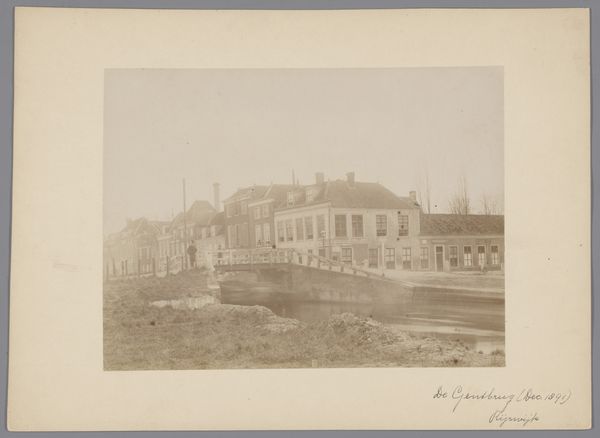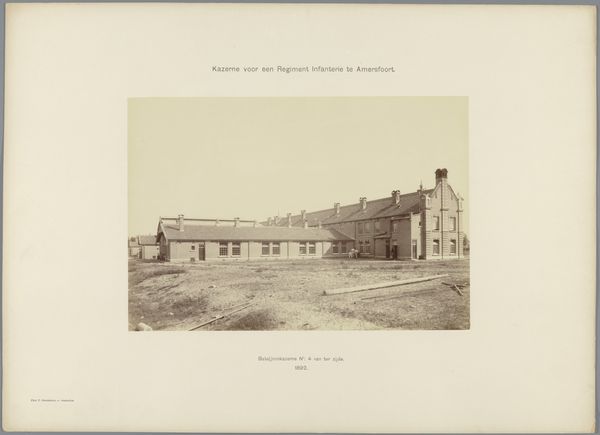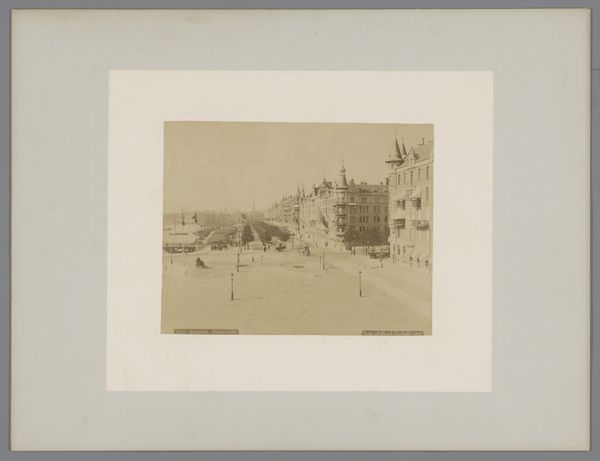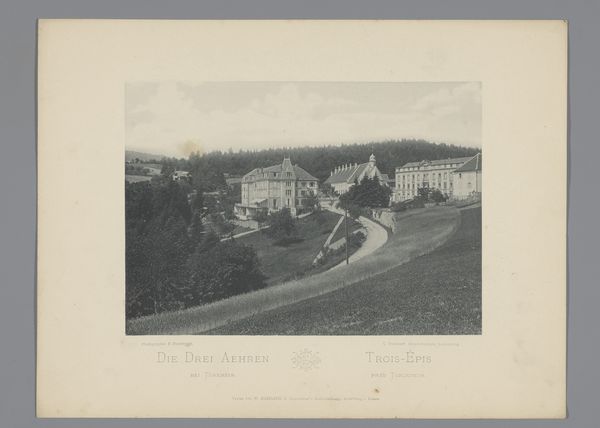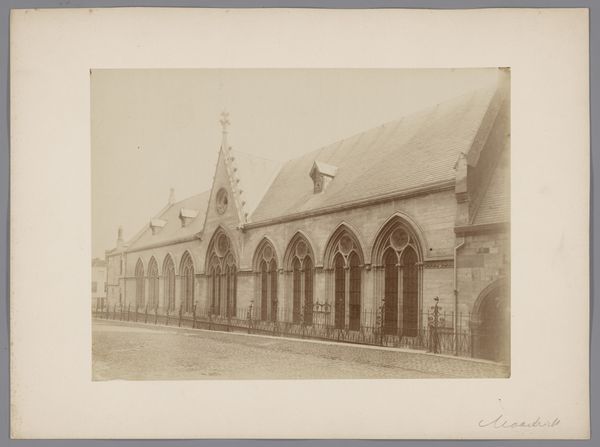
print, photography
# print
#
landscape
#
photography
#
cityscape
#
realism
Dimensions: height 48.5 cm, width 66 cm
Copyright: Rijks Museum: Open Domain
Curator: Looking at this evocative photographic print, "Kazerne voor een Regiment Infanterie te Amersfoort" by P. Oosterhuis, created around 1892, I am struck by how it presents a very controlled cityscape. The orderly lines of the infantry barracks against the vast landscape almost project power. Editor: Immediately, the starkness jumps out. It’s a washed-out world. Those barrack buildings—institutional, monolithic and forbidding; almost aggressively functional. It speaks to me of order, of constraint, and a certain social anxiety. Curator: Absolutely, and that sense of order is deeply tied to the role of the military in society at the time. The regiment would have been seen as a stabilizing force, both within the nation and as a protector against external threats. Consider that photographic prints like this were also ways of showcasing and reinforcing that image of strength and control to the public. Editor: And at what cost? Seeing the stark, imposing structure in a world rendered gray—are we looking at an idealized image, or a stark warning of the machinery of war and subjugation encroaching into everyday life? Is the "protector" actually a jailer for some? Curator: Well, there's also the level of realism here, part of a popular photographic trend. It documented existing structures as they really were. Of course, that act of documentation itself serves specific narratives—like demonstrating the modern progress of a nation. Editor: True, and maybe that 'progress' is exactly what unsettles me. Those buildings signal more than just military strength. They reflect hierarchical social structures. That one lone figure on the path— are we meant to identify with their place within this machine? Are we admiring the might, or questioning the power dynamic that underlies such organization? Curator: That’s an excellent point. It really emphasizes how photography isn't merely objective documentation, but an interpretation and communication of ideas. The seemingly banal depiction of an infantry barracks becomes imbued with so much more complexity regarding military authority. Editor: It also really points to photography’s evolving role—not just recording but molding perceptions. The photographer makes deliberate choices about composition and tone—to elicit certain feelings towards such places. We have a window into the visual rhetoric of power. Curator: Yes. This dialogue we’ve shared underscores how a seemingly straightforward image from the late 19th century still compels us to think about the relationship between state power, architectural space, and visual representation. Editor: Precisely, the act of looking is always an act of questioning. Even in these calm seeming, realist cityscapes.
Comments
No comments
Be the first to comment and join the conversation on the ultimate creative platform.
